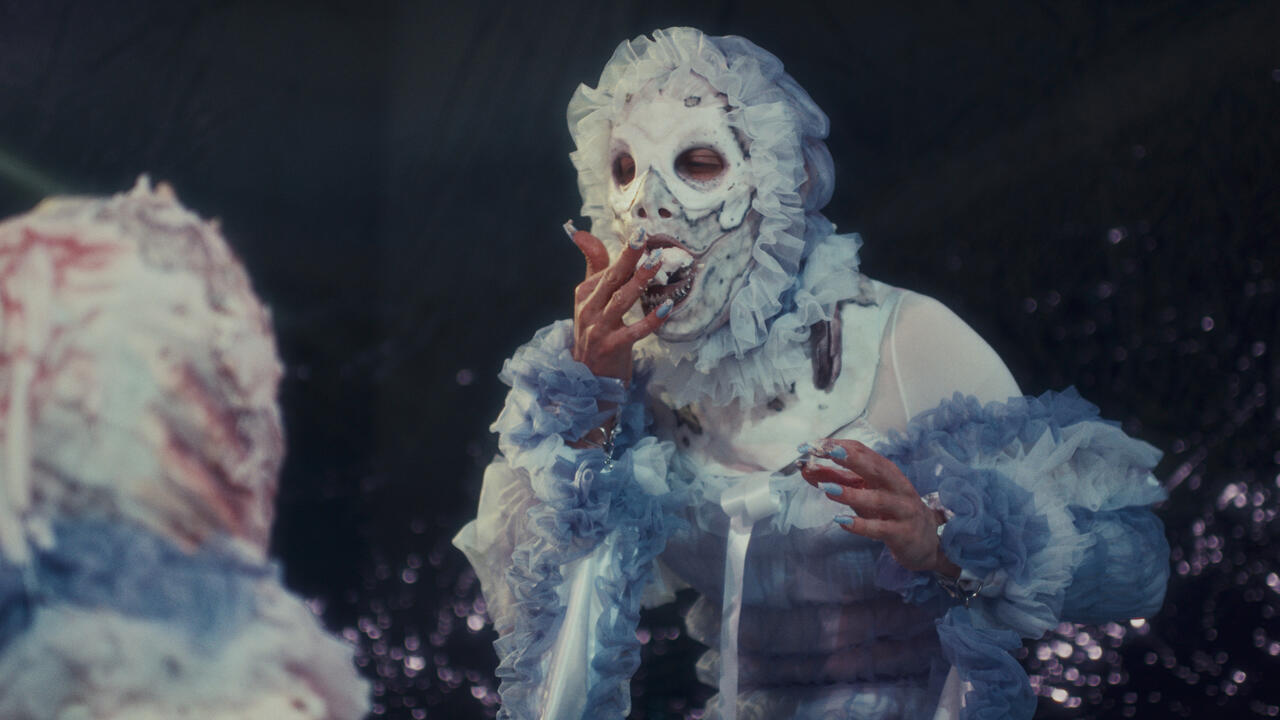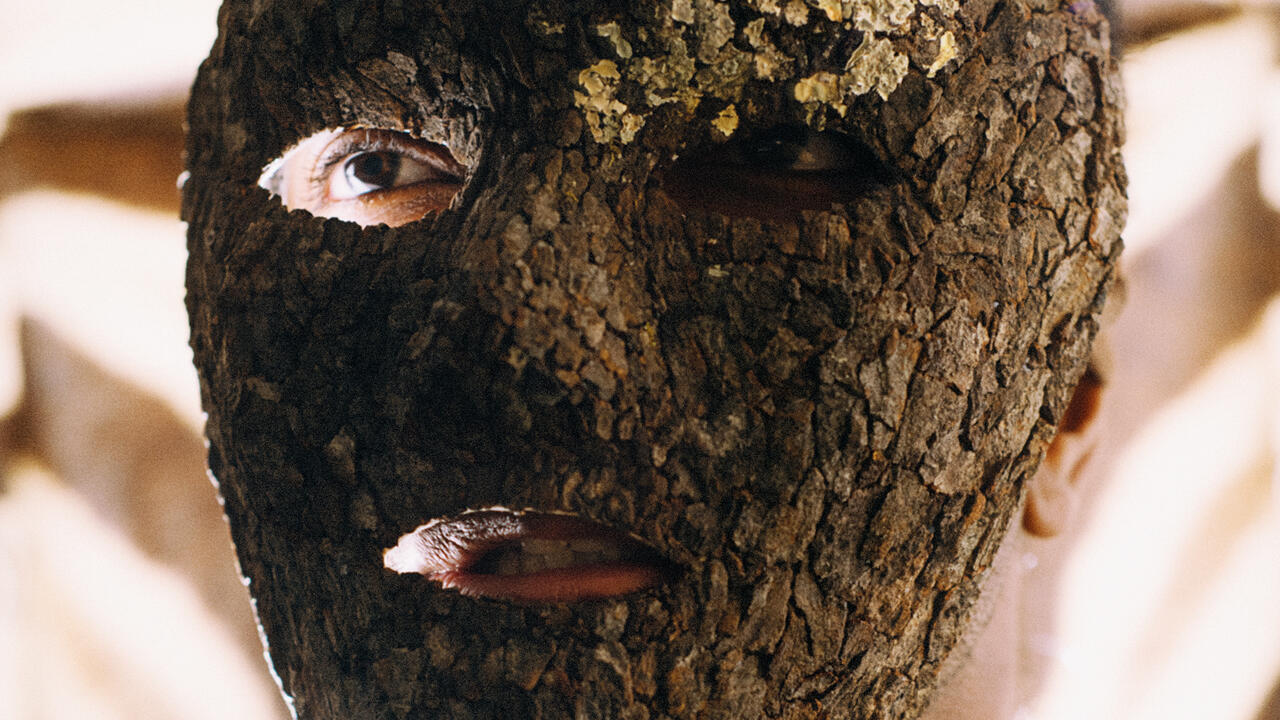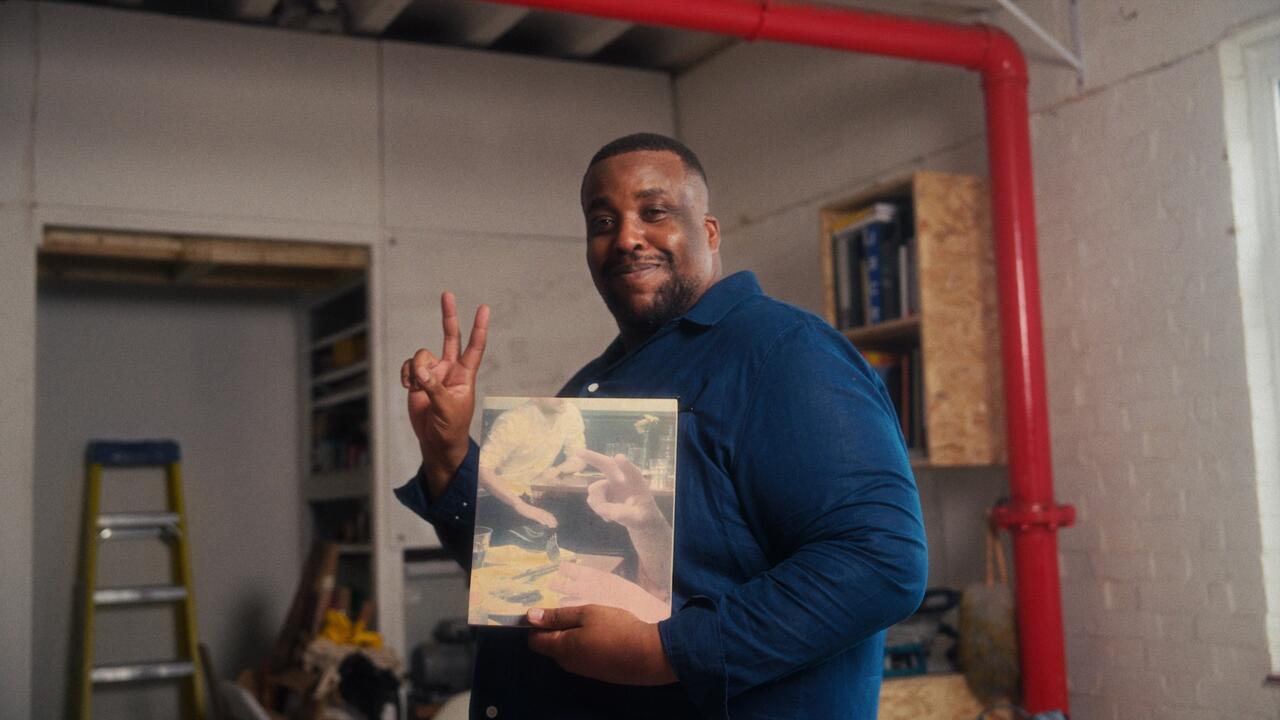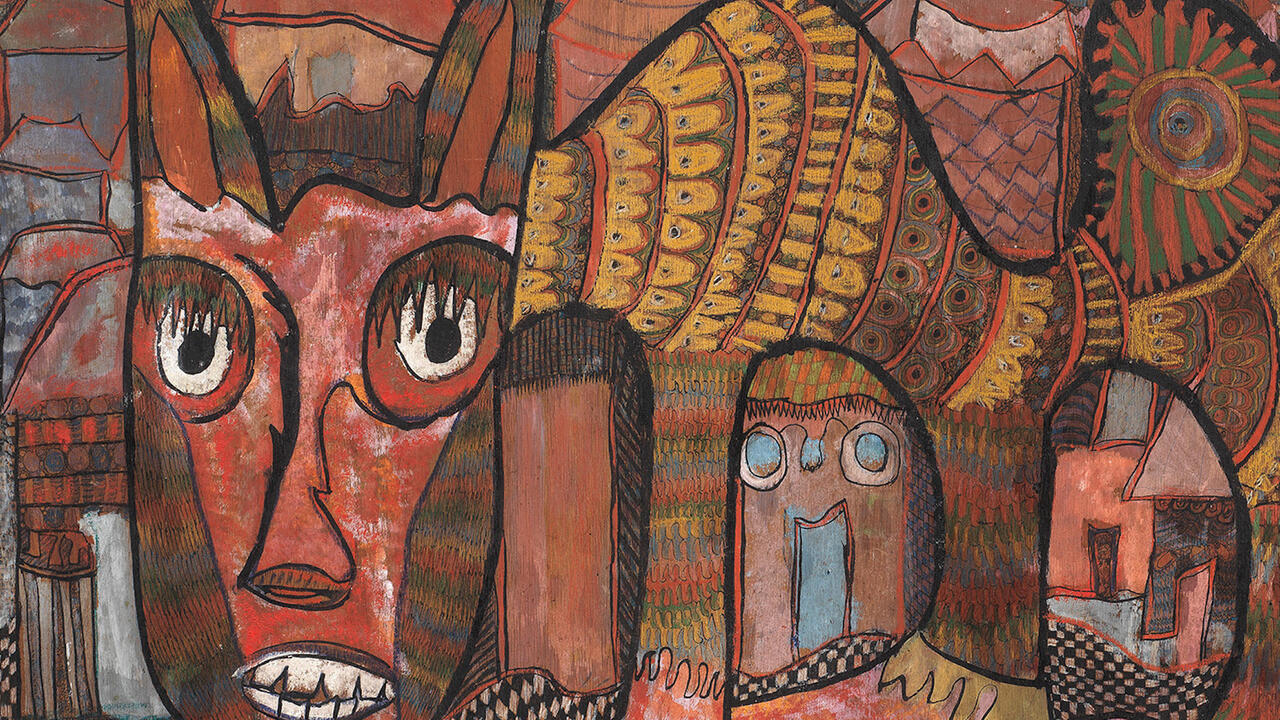Geta Brătescu

Born in 1926, Geta Br˘atescu has been a seminal figure in the Romanian art scene for more than 40 years. Her complex experimental practice refuses simple categorizations. ‘Geta Br˘atescu – The Artist’s Studios’, a survey show at Salonul de Proiecte, a branch of the Museum of Contemporary Art (MNAC) in Bucharest, proposed reading her practice through the prism of her various working environments. Instead of proving simple determinism, it unveiled an almost organic relationship between the artist’s oeuvre and the places where she has been active.
The show began with the most obvious of these locations, Br˘atescu’s studio: a half-sacred, half-prosaic space which functions as a workshop, a stage and a rich source of inspiration and materials. Balls of wool, picture frames, scraps of paper, felt and canvas, wooden and metal boxes, dried teabags, etching tools and apricot stones are just some of the objects that appear in the film The Studio (1977). Travelling through the studio’s densely filled interior, the nosy gaze of the camera encounters the artist sleeping peacefully on a sofa. The film goes on to document Br˘atescu performing various actions and interacting with the objects crowded around her. The mood is one of harmonious coexistence but also of a mysterious, creative co-dependence. Humble, ordinary objects gain new lives in the artist’s restless hands. Some of the elements recognizable in the film appeared in the exhibition: The Traveller (1977), a chair ornamented with a photograph of eyes, leaned against the wall. Beside it, the series of fragile collages, ‘Vestigii’ (Vestiges, 1978) – carefully assembled from scraps and pieces of fabric collected by the artist’s mother – hung on the wall. In Br˘atescu’s practice, material limitations become possibilities, and this endless, creative process of recycling has spanned her entire career.
Br˘atescu’s remarkable sensitivity toward the shapes and forms hidden in her surroundings allowed her to expand the notion of the working environment far beyond the walls of her studio. The second part of the exhibition focussed on her work with industrial spaces. In the early 1960s, following official doctrine, she began making sketches in the Romanian Railways Boiler Factory. The resulting graphics and drawings of machines and interiors shown in the exhibition were just part of the outcome of the experience. Br˘atescu translated the motif of rough pistons and sprockets into subtle circles filled with pastel colours in the series ‘The Rule of the Circle, the Rule of the Game’ (1985) and these shapes have persisted in her work ever since. Since the ’60s, she has also been working as an artistic director of Secolul 20 (20th Century), a magazine devoted to contemporary literary, artistic and philosophical theory. Her position demands frequent visits to the printing house, where she photographs, sketches and appropriates objects from the space. While the impact of Br˘atescu’s environment on her artistic production could have been a rather banal curatorial conceit, in this show it was illuminating in its simplicity. When I visited Br˘atescu in her studio, I saw a beautiful, naturally polished river stone that looked like one of Constantin Brancusi’s sculptures. She found it in his native village.
Br˘atescu has often derived her motifs and visions from her travels. The myths and landscapes of the Mediterranean, in particular, fuelled her imagination and defined the last and most metaphorical space in the show. Among its highlights was Hypostases of Medea (1980), a spectacular set of embroideries whose caption cited an unusual medium: ‘drawing on textile with sewing machine’. This short description shed light on another crucial aspect of Br˘atescu’s working process: drawing is at the core of everything she does. Her preparatory studies, sketches, visual instructions and notes occupied many of the walls and vitrines here. Two groups of illustrations, Aesopus (1967) and Mythology (1974), provided insight into her extraordinary ability to create dynamic but incredibly precise lines. Seen in this context, her tiny collages made from colourful geometric paper cut-outs on cardboard (Jeu des Formes, Play of Forms, 2009), described as ‘drawings with scissors’, unveiled their poignant character. Although the artist – at the age of 86 – is not always capable of keeping her lines as rigorous as she would like, she reaches for the scissors to maintain her contours and keep the work’s edges steady and sharp.
Though ‘Geta Br˘atescu – The Artist’s Studios’ didn’t depart from its fairly straightforward narrative, it was full of nuances and possibilities for new connections and alternative interpretations. Rather than focus on her experience of being a female artist working under the communist regime, the curators chose to situate her practice in a broader context. After all, Br˘atescu’s works and texts are crowded with animated objects, mysterious alter egos and references to biblical stories, Balkan fairytales and Greek myths. The smallest and most recent piece on display, The Crazy Line (2012), was a wooden pencil box containing a long, folded paper strip. Its surface was covered with a dense abstract pattern, drawn automatically but precisely, like a structured stream of consciousness, offering the prospect of endless unfolding.
















